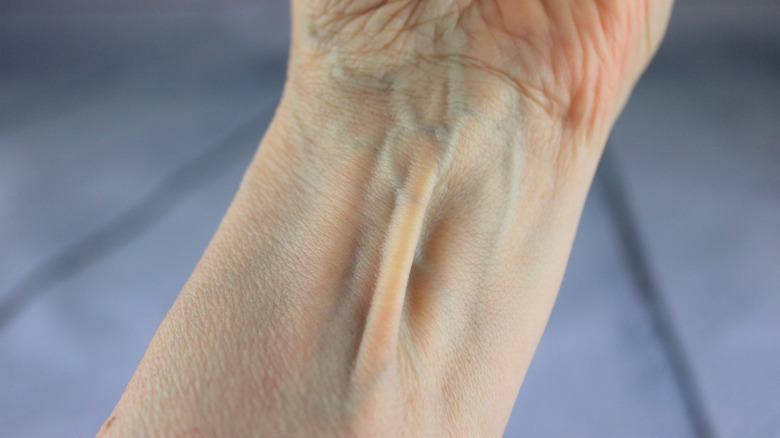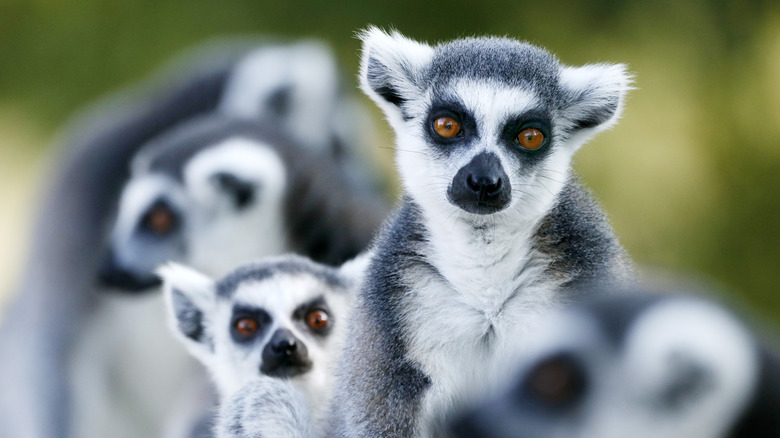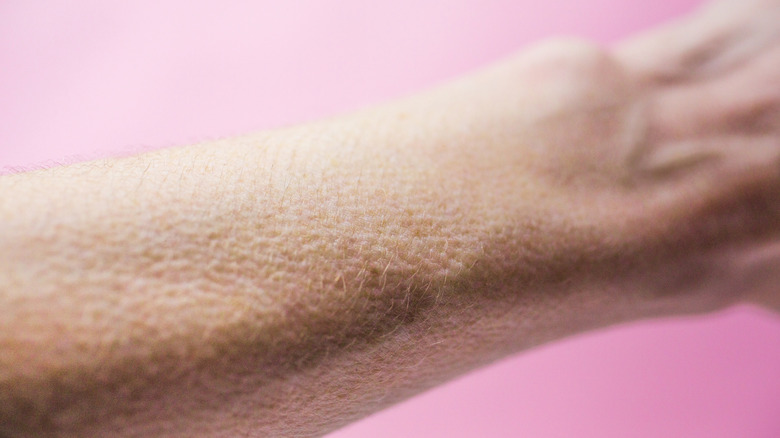One Missing Feature From Your Wrist Is A Clear Sign Of Evolution
Try this: hold out your arm, palm up, and touch your thumb to your pinky while slightly bending your wrist. See a tendon pop up in the middle of your forearm? That's the palmaris longus — at least it is if you happen to have one. Many don't. Traditionally, statistics indicate that 10–15% of the human population lack the palmaris longus muscle. That figure originates from a 1944 report on its prevalence in our species, but more recent studies show its absence ranges anywhere from 1–64%, depending on the particular global population studied.
If you don't have it, don't worry — you're not missing out on anything. In fact, you probably wouldn't even notice unless a doctor told you, and that's exactly what makes the tendon so fascinating. It's a vanishing anatomical feature that serves no essential function but does serve as evidence of evolution right under your skin. This palmaris longus is vestigial, a biological leftover from an earlier chapter of our species' evolutionary story that caused us no discernible disadvantage and, as a result, has simply hung around. The nature of vestigial traits is one of the many things that people get wrong about evolution, but they can teach us a lot about human natural history.
Researchers believe this tendon was once crucial for our tree-climbing primate ancestors, helping with grip strength during vertical locomotion. Today, it's often removed in reconstructive surgeries without any loss of function or strength, making it a rare body part we're born with and don't really need. Its gradual disappearance across populations isn't just quirky, it's a microevolutionary shift that tells us how the human body is still adapting to life on two feet.
A muscle we no longer need
The palmaris longus connects to the lower end of the humerus (upper arm bone) on one end and to the palmar aponeurosis, a fibrous bit of muscle located in the palm of the hand, on the other. In primates, especially those that swing or climb, this muscle aids in wrist flexion and grip strength. Tellingly, the muscle's strength lowers as you move along the evolutionary timeline of primates and their descendants (being more prevalent in lemurs and other primates that locomote by swinging and climbing), lending credence to the idea that the importance of the palmaris longus is slowly dissipating.
In modern humans, the function has faded almost entirely. Studies have shown that individuals with the muscle show no significant increase in grip strength compared to those without it. It's so inconsequential that it's routinely removed during aesthetic or reconstructive surgeries and used to repair other tendons or construct "new" body parts like lips or other facial features. Surgeons have even harvested parts of the palmaris longus to use in corrective eyelid replacement surgeries.
But what's particularly fascinating about it is how variable its presence is across human populations. In one 1997 study, researchers found that nearly 64% of individuals between the ages of 12 and 18 in Türkiye were missing the muscle in at least one arm (and sometimes both). Contrast that with a research study from 2000 that analyzed nearly 200 individuals in South Korea, finding that just 0.6% of them lacked the muscle. The muscle has simply stuck around, not being disadvantageous enough for evolution to get rid of it entirely (unlike the 7 bizarre species of humans that went extinct completely).
Humanity's evolutionary leftovers
The palmaris longus isn't the only ghost of evolutionary past lingering in our bodies. In fact, we're walking museums of biological history. Consider the plica semilunaris, the small pink fold in the corner of your eye. It's believed to be a vestige of a nictitating membrane, a third eyelid seen in birds, reptiles, and some mammals used for protection and moisture. In humans, it's largely considered a leftover, though some researchers believe it may still aid in protecting the eyes.
Goosebumps are another example of an evolutionary relic. When your skin constricts due to cold or fear, that's thanks to the arrector pili muscles contracting around hair follicles. In our ancestors (and modern-day cats), this made the hair stand up on end, leading to a visual increase in size — a useful tool for encounters with predators or rival members of the species. Since humans have relatively little body hair, this function no longer serves its original purpose. However, recent research suggests that the muscle plays a role in maintaining hair follicle integrity, which could impact hair loss. If true, the arrector pili muscle's vestigial status would be called into question.
And then there's everyone's favorite odd evolutionary leftover, the coccyx, better known as the tailbone. Common as the term is in our daily lives, we tend to forget that this bony nub at the base of the spine is a remnant of the tails we (or rather, our primate ancestors) used to have, aiding them in balance and movement. While the idea of humans with tails may seem odd, it's far less off-putting than these 10 gross adaptations humans evolved over the years.


